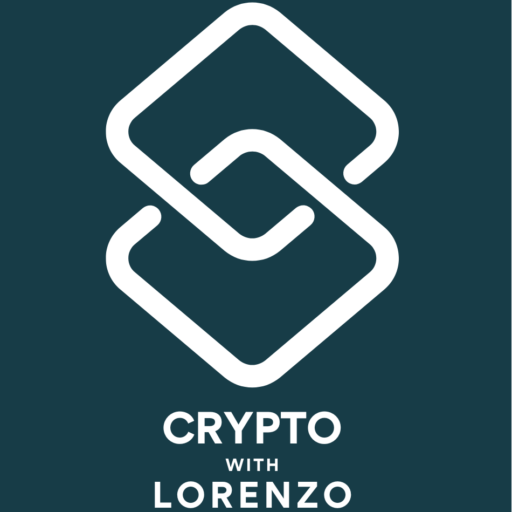Ethereum Merge: Towards A New & Exciting Era

Interest rates, inflation, recession fears, geopolitical stability and overall belt-tightening have all (to varying extents) contributed to vast sums of money flowing out of the crypto sphere over the past 6–9 months. However, the recent announcement of a (tentative) mid-September launch of the Ethereum Merge, the full transition of its blockchain from the Proof-of-Work (PoW) to the Proof-of-Stake (PoS) consensus algorithm, has re-ignited hope and enthusiasm in the crypto sector.
A significant advantage of this process is that Ethereum run solely on PoS is anticipated to reduce the the ecosystem’s energy consumption by a whopping ~99.95%. If this milestone is achieved and maintained, it would silence the critics lambasting the crypto space, notably Bitcoin (which, I acknowledge, requires an overwhelming amount of energy owing to its size and global reach).
ETH prices have increased by roughly 50% over the past 7 days, leading the double-digit % surge in prices for several major altcoins as well. Adding to the market-wide optimism is Polygon (MATIC), a major layer-2 scaling solution that will most likely maintain a prominent role in aiding Ethereum scalability, is up by more than 70% over the same period, in part owing to development updates.
Custodial and non-custodial wallets overview for your ETH
Broadly speaking, there are two ways to earn staking rewards for ETH, let alone any crypto asset: custodial and non-custodial wallets. The former involves a third-party (such as a centralised crypto exchange) to hold and manage the private keys linked to your crypto. Whilst the most convenient option, you are at the mercy of the third-party’s security measures (or lack thereof).
Enter non-custodial wallets. These involve you having full control over your crypto assets; you have the right (and responsibility) to secure the private keys and recovery seed at all times, which are required to access your crypto.
More information about these two classifications is available here, and examples of hardware (physical NC) wallets such as Ledger and Trezor.
How can I begin staking ETH to earn continuous rewards?
A popular option via a hardware wallet is to use the Lido stake pool through Ledger. This is currently one of the of the most renown ETH stake pools.
I have made a tutorial of staking using Lido, and touch on Atomic Wallet, Rocket Pool and other NC options. In this video, I also cover some custodial wallets available for ETH staking. In regards to the latter, here is a list of some popular exchanges that support ETH staking options at present (but not limited to these):
— Binance
— OKX
— Bitstamp
— Swyftx
— Coinbase (check your jurisdiction before opting for ID verification to ensure that you are eligible for ETH staking/earn).
Slow and steady wins the race?
Discussions pertaining to the aforementioned upgrade (a.k.a. Phase 1 of Ethereum 2.0) date back to 2017. Frequent delays of 2.0’s (tentative) launch date have provoked the ire of many ETH enthusiasts. However, it is worth remembering that the second-largest blockchain based on market cap (yet the most extensive one relating to smart-contract functionality) requires a gargantuan amount of testing, bug bounties, tweaks, etc. to become a consistently functioning product.

Notwithstanding its delays, the full implementation of The Merge should not be rushed. Major and frequent glitches shortly after inception will only embolden many of the critics and naysayers to disparage Ethereum as much as possible; this space is already very tribal and toxic, the last thing we need is more issues to help fuel certain charlatans wanting to take Ethereum down.
More exciting developments on the horizon
The Merge represents one of, if not, the most revolutionary upgrade in the blockchain’s history to date, albeit brief.
Beyond its launch, another dominant upgrade, anticipated to occur sometime in 2023, is the deployment of rollups and sharding. If all goes to plan, this will facilitate significantly higher throughput (scalability) on the network and considerably cheaper transaction fees respectively.
Adding to the optimism surrounding Ethereum is the Ethereum Improvement Proposal (EIP) 1559, introduced in late 2021. This EIP brought about reforms to the transaction (gas) fees on its blockchain, including a burning mechanism that, in turn, helps contain the circulating supply of Ether, gradually leading to a deflationary supply. One only need to reflect on BNB (formerly Binance Coin) price trends to see how this Ethereum competitor has benefitted from the ongoing quarterly burns.
Notwithstanding excitement surrounding the (eventual) start date of The Merge, coupled with ongoing network improvements for various blockchain projects, time will tell whether this growth can be sustained, despite a gloomy outlook for global markets in the near future.
Nonetheless, medium to long-term prospects of this nascent space remain strong, and strengthening fundamentals for Bitcoin, Ethereum and other blockchains will only bolster support for these works.
The Enterprise Ethereum Alliance, plethora of ERC-20 tokens, exhaustive range of DApps covering multiple sectors in our society, and recent/pending aforementioned network upgrades are just some reasons why remain bullish on Ethereum, in spite of ETH being down 68% from its all-time high.
Some important Ethereum PSAs
There will inevitably be unscrupulous pieces of work aiming to take advantage of underinformed Ethereum investors during this PoW to PoS transition. A key take-home message here is that there is no separate ETH2 coin as part of The Merge (N.B. some exchanges have used this reference to distinguish staking rewards in “ETH2” versus one’s ETH holdings, however, this has never required a user to “migrate ETH2 to a new address”, it is simply done automatically).
Anyone claiming otherwise and insisting there is as part of migrating funds as part of The Merge is a scam. This is also explained on Ethereum’s official website (see ‘Eth2 token scam’), which I highly recommend reading as this contains all you need to know to protect yourself from any Ethereum-related scams.
Please inform others within your networks regarding any potential scams that might arise from the PoW to full PoS shift; not everyone might be as knowledgeable about crypto as you, and it is in the best interests of all legitimate participants in the space to minimise the number and severity of scams.
Get an email whenever Crypto With Lorenzo publishes. By signing up, you will create a Medium account if you don’t…cryptowithlorenzo.medium.com
The information contained within this article is a mixture of research and opinions from either myself or the authors of the articles contained within. None of this is financial advice and I am not a financial advisor. Please do your own research (DYOR) before potentially investing in anything relating to crypto/blockchain technology.
Read every story from Crypto With Lorenzo (and thousands of other writers on Medium). Your membership fee directly…cryptowithlorenzo.medium.com
P.S. If you have read this far, it goes without saying that I hold Ether. Whilst I speak highly of Ethereum, I also also several other crypto assets and consider myself to be coin/token agnostic, as opposed to a maximalist. I want the overall cryptocurrency/distributed-ledger technology space to thrive, not just Ethereum.
